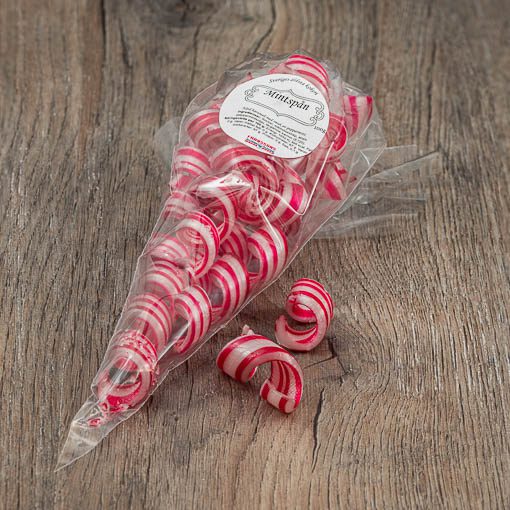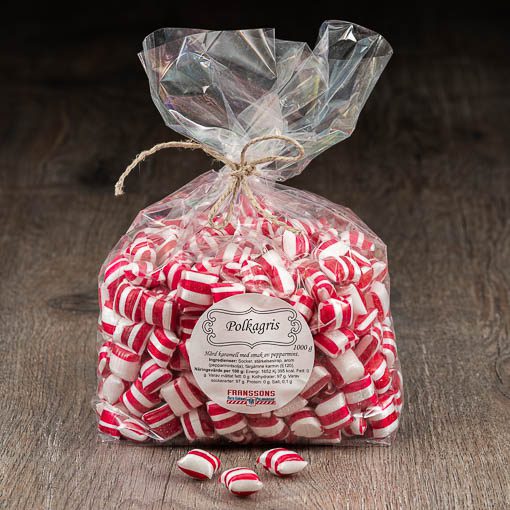Once upon a time…
It all began in 1859, when the newly widowed Amalia Eriksson received permission from the magistrate to support herself and her daughter by producing “fine pastries and the so-called polka biscuit”.
The name is said to come from the polka dance that was very popular in the 1840s. The pigs were originally “pluttar”, i.e. peppermint toffees, but after a while Amailia launched the polka rice bar, which became Gränna’s main trademark – and one of Sweden’s most popular souvenirs.
Aunt Amalia was the sole producer for a long time, but to meet the growing demand, more polka rice bakers appeared in town.
Today there are a dozen bakeries in Gränna where you can see how the production is done. Here they are boiled, pulled, kneaded and twisted. For the classic red and white polka rice, sugar, water and vinegar are mixed and then heated. The batter is then poured onto the baking tray. A small part is set aside and dyed red. The rest is seasoned with peppermint oil and then the kneading and pulling begins.
Nowadays, many people use a machine to pull the dough, to make it airy and fine. Once the processing is complete, the polka rice dough is formed into a loaf with the red batter laid out in a strip on top. Then just pull and twist until the polka dots have the right twist and size.
Nothing is as good as a freshly baked polkagris!
Today there are bars in many colours and flavours, but remember that a genuine Gränna Polkagris is always red-white striped!
If you want to visit Aunt Amalia, she is in the South Park, where she is a statue.
Franssons Polkagristillverkning started in 1967 and is one of the oldest polkagri bakeries in Gränna. Over the years, we’ve won two World Championship polka rice baking prizes and a Guinness World Records record for the world’s largest polka rice.


